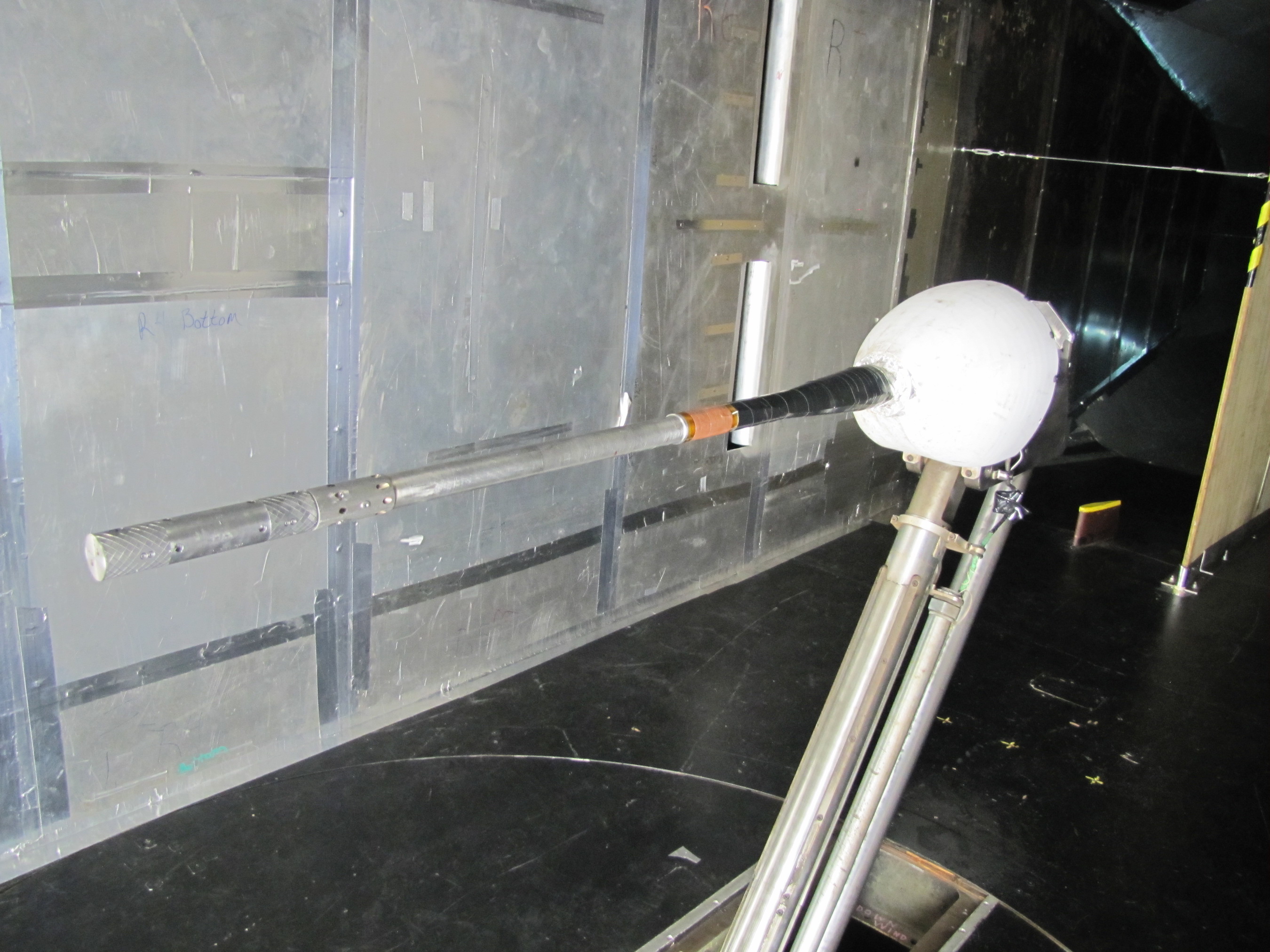The Mark XIII and Mark X are strain gage internal balances that measure five forces and one moment. They measure two normal force loads, two side force loads, an axial force load, and a rolling moment. The pitching and yawing moments are calculated from the respective forces and known distances between the gages. It is important to note that the factor of safety for these internal balances is small, approximately 1.25. Due to this, it is imperative to not overload the balance or one of the internal gages will likely fail. Because of this restriction, the Mark XIII is most commonly used.
| Internal Balances | ||
| Task Mark X | Task Mark XIII | |
| Diameter | 1.25 inch | 1.25 inch |
| N1, N2 | 100 lb, ±0.1 lb | 500 lb, ±0.4 lb |
| S1, S2 | 50 lb, ±0.1 lb | 500 lb, ±0.5 lb |
| Axial Force | 60 lb, ±0.1 lb | 150 lb, ±0.1 lb |
| Rolling Moment | 120 in.lb, ±0.5 in.lb | 800 in.lb, ±1.7 in.lb |
| Pitching Moment | 425 in.lb | 2625 in.lb |
| Yawing Moment | 260 in.lb | 2125 in.lb |
The internal balance is installed using a simple taper and setscrew to a sting mounted on the LSWT High Attitude Robotic Sting (HARS) system. The HARS system provides pitch and roll control of the model while keeping the model in the center of the test section. Once attached to HARS, the sting and balance system is then secured internal to the model using a balance block as the intermediary between the model and the sensitive balance. Once securely mounted, the model then has full roll, pitch, and yaw capability from the combination of HARS and the turntable.
Where ground vehicles and stationary objects are best suited for the external balance, aerospace vehicles advance their designs though use of the internal balance. Because of the pitch and yaw capability outside of the boundary layer, vehicles come as close as possible to simulating flight conditions.
The LSWT team is very versatile, creative, and experienced and will tackle any project head on and do their best to create a mounting and data acquisition system that will fit your individual needs. If you have any questions about testing at the LSWT, please contact us.


